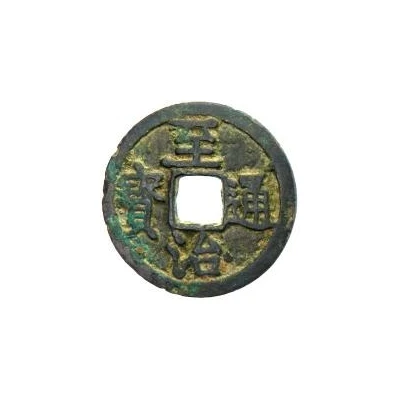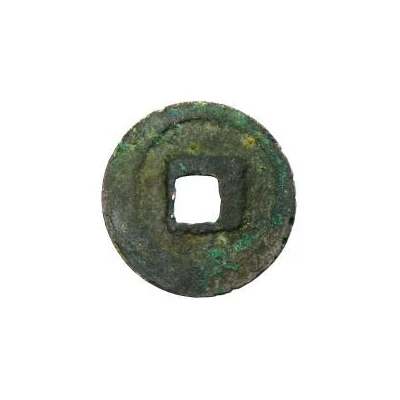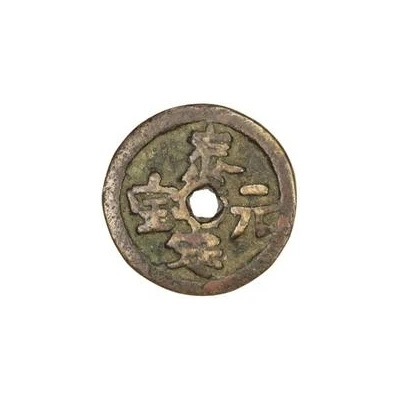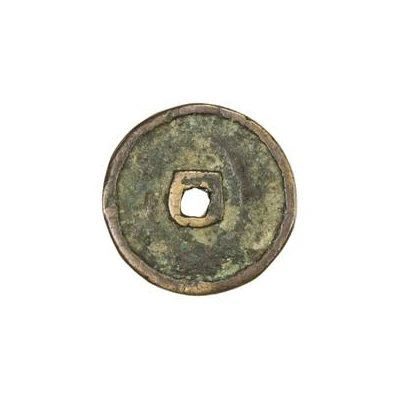Fractional cash - Taiding Yuan Nian; temple coin
1 (1324) year| Bronze | - | 22 mm |
| Issuer | Empire of China |
|---|---|
| Emperor | Yuan dynasty › Yesün Temür Khan "Taiding" (元泰定) (1323-1328) |
| Type | Token |
| Year | 1 (1324) |
| Calendar | Chinese - Taiding era |
| Value | Fractional cash (½) |
| Currency | Cash (621-1912) |
| Composition | Bronze |
| Diameter | 22 mm |
| Shape | Round with a square hole |
| Technique | Cast |
| Orientation | Medal alignment ↑↑ |
| Demonetized | Yes |
| Updated | 2024-10-03 |
| Numista | N#221698 |
|---|---|
| Rarity index | 100% |
Reverse
Blank (uniface).
Edge
Plain
Comment
During the Yuan dynasty, there was a preference for paper money and silver ingots, making actual coins scarce or rare. However, the Yuan dynasty emperors supported Buddhism, and allowed temples to cast their own statues and artifacts. These temple coins were originally cast as offerings to Buddha, but due to their metal content, they still had an intrinsic value. While they were not official issues, these were widely accepted and used as small change in the markets.With these not being official issues, there are different diameters and weights possible. The average weights seem to be around 1/2 Cash, but smaller and larger weights exist.
Interesting fact
The Token Fractional cash - Taiding (Yuan Nian; temple coin) 1 (1324) was used as a form of currency during the Yuan Dynasty in China, which was established by Kublai Khan in 1271. The coin was made of bronze and had a unique square shape with a hole in the center, which made it easy to string together with other coins for larger transactions. Despite its small denomination, the coin was an important part of the economy during that time and was used for everyday transactions, such as buying food, clothing, and other necessities.



